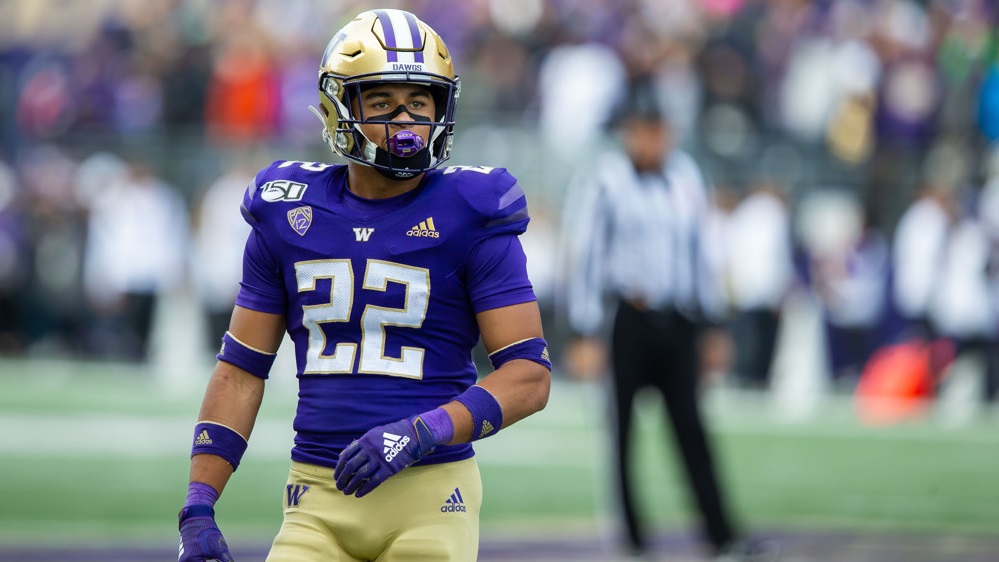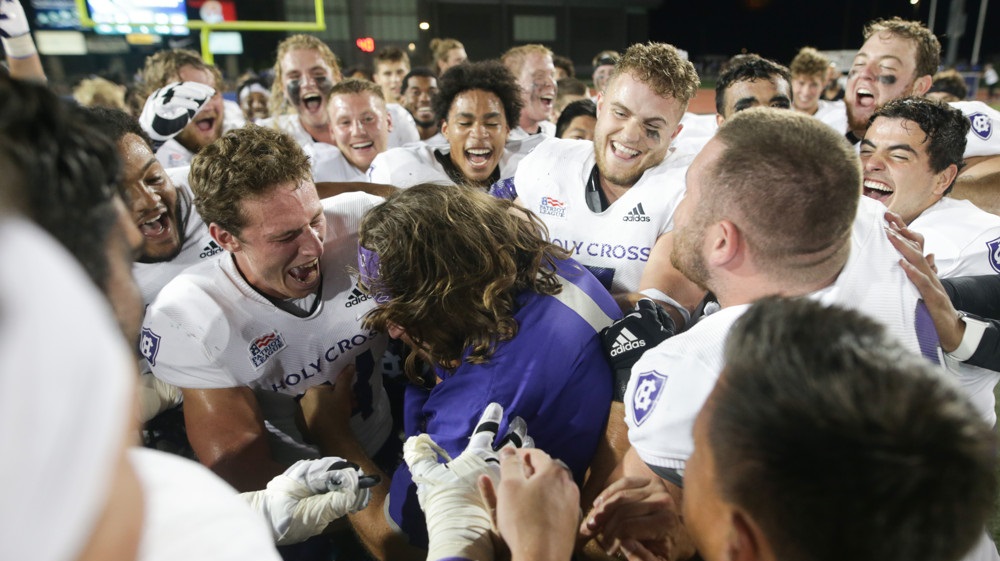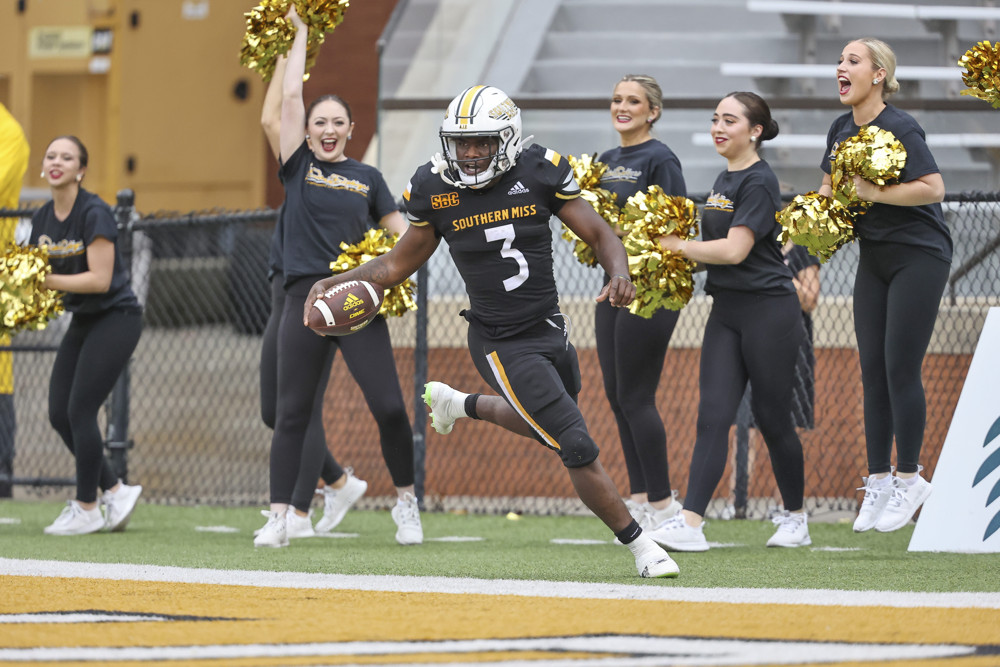Every year, another group of interesting quarterbacks. Every year, another conundrum about how to project them effectively, given how complex the position is and how different the context around them will be in the NFL.
C.J. Stroud is a great example of the context part of this. He’s thrown to the likes of Chris Olave, Garrett Wilson, Marvin Harrison Jr. and Jaxon Smith-Njigba over the last two years. It’s not surprising that Stroud has put up big numbers.
So with this group of four top prospects—Stroud of Ohio State, Bryce Young of Alabama, Anthony Richardson of Florida, and Will Levis of Kentucky—I want to try to identify some of the bits of context that might be relevant to their evaluation.
Establishing a Starting Point
It’s probably good to just start with a standard measure of total production to align on how to compare these players. Ignoring any kinds of situational factors, we can take EPA as a good measure of overall production, and then we’ll get to trying to split out the individual contributions in a second.
QB Passing EPA Ranks, 2022
(out of 98 QBs with 250 attempts)
| Pass EPA Rank | |
| C.J. Stroud |
4 |
| Bryce Young |
6 |
| Anthony Richardson |
52 |
| Will Levis |
55 |
That makes for some pretty obvious tiers as passers.
Richardson has the extra dimension with elite running ability, and obviously that’s not included here. This is just to show that Stroud and Young stand on their own from a passing production standpoint (which is, naturally, the most relevant kind of production for a QB).
It’s difficult to advocate for Will Levis from a production perspective. His candidacy for a top pick relies on things a data analyst is ill-equipped to evaluate. So keep that in mind as we compare him to the rest of the crew.
Now, let’s get onto trying to evaluate the offenses these players generated this production from.
Teammates
Let’s start with the interlocking parts of the players around each of these players. The Total Points system endeavors to disentangle the performance of each player, so let’s use that.
Here are the team ranks in Total Points per play by the pass catchers and pass blockers around each of these prospects in 2022.
Team Total Points per Play FBS Ranks
| Receiving | Pass Blocking | |
| Ohio State (Stroud) |
2nd |
54th |
| Alabama (Young) |
11th |
76th |
| Florida (Richardson) |
26th |
18th |
| Kentucky (Levis) |
16th |
16th |
Richardson’s receiving corps was definitely the most limited among this group. Their on-target catch rate was below average, which wasn’t true of the other three schools. It’s the same with contested-catch situations: Florida receivers came down with just 25% of such throws, compared to an FBS average of 32%.
None of these players had poor offensive lines that might tilt our evaluations, but Levis and Richardson did benefit from pretty stout pass blocking overall. That’s something to keep in mind when looking at their pressure rates, which are both higher than average. That suggests they’re inviting pressure to an extent that could prove troublesome at the next level.
Easy Completions
Another big talking point is how often quarterbacks are given really easy throws that can inflate their numbers. The screen game is one example of this, but so is throwing to a lot of open windows. In theory we want players who don’t rely too much on these plays.
While only Levis was given specifically more screens than average, all of these prospects had their fair share of easy throws in 2022. Only Stroud ended up with fewer total easy throws than the FBS average.
Top Prospects’ Easy Pass Rates, 2022
| Screen% | Wide Open % (Non-Screen) | Total | |
| C.J. Stroud |
10% |
14% | 24% |
| Bryce Young |
11% |
19% |
30% |
| Anthony Richardson |
9% |
21% |
30% |
| Will Levis |
16% |
13% | 29% |
| FBS Average |
13% |
14% |
27% |
On these easy throws, Richardson’s accuracy numbers are the worst of the group. That could be seen as a large problem with his mechanics, or as low-hanging fruit to achieve quick improvement.
If we’re trying to choose the “winner” of this comparison, we might give Stroud the advantage for having fewer “gimmes”.
Simplifying Reads
Scheme can help by creating open throwing lanes, but it can also streamline the decisions the quarterback has to make. We know the hallmarks: play action, RPOs, and designed rollouts. Deceive the defense, split the field up, sharpen your focus to a limited number of players on both sides of the ball.
Team Offense Play Type Percentages and Ranks, 2022
| Play Action % | RPO % | Designed Rollout % | |
| Ohio State (Stroud) | 19% (39) | 14% (95) | 11% (17) |
| Alabama (Young) | 18% (57) | 32% (14) | 3% (112) |
| Florida (Richardson) | 31% (1) | 29% (22) | 12% (16) |
| Kentucky (Levis) | 17% (65) | 10% (113) | 7% (58) |
Richardson stands out here, but in a way that is probably somewhat consistent with how he’d be used at the NFL level. (Well, maybe not quite so many RPOs, since both he and Young used them at a rate higher than any NFL team.) It makes sense to get him on the move on designed rollouts to leverage his athleticism outside the pocket, but he was productive as a passer in those situations, too.
Stroud has benefited from the simpler reads that come from designed rollouts, ranking in the top 10 in Independent Quarterback Rating each of the last two years on those plays. He’s not the same athlete as Richardson, so the threat to the defense isn’t the same, but it’s something that the team that drafts him probably would like to integrate.
If we take out all these scheme elements and just try to isolate “straight up” pass plays, we’re sort of squinting to see what the player can do without some of the bumpers (to use a bowling reference). And when we do that, we get a result that looks a lot like the initial findings we had up top: Young and Stroud >>>.
QB Ranks without Play Action, RPO, or Rollouts, 2022
(out of 101 QBs with 150 attempts)
| Total Points / Play | IQR | |
|---|---|---|
| C.J. Stroud | 2 | 7 |
| Bryce Young | 1 | 2 |
| Anthony Richardson | 38 | 87 |
| Will Levis | 66 | 59 |
Looking as far back as 2018, Young and Stroud each have two seasons in the top ten in the Total Points per play split (over 400 player seasons qualify). They’re joined exclusively by first round picks at the top: Kyler Murray, Justin Fields, and Mac Jones have the three best seasons.
Young coming at the top here is particularly compelling because of how RPO-dependent the Alabama offense is. Even if we remove those elements—which we know to be utilized less at the next level—he shows outstanding performance worthy of a top selection.
It’s an interesting contrast with Stroud, whose production is hard to claim is superior, but who arguably did so with fewer schematic supports to lean on.



